Any links to online stores should be assumed to be affiliates. The company or PR agency provides all or most review samples. They have no control over my content, and I provide my honest opinion.
I have previously reviewed the SpotCam Video Doorbell 2 and found it to be a good, affordable alternative to popular video doorbells such as Ring, Eufy and Arlo.
Spotcam recently launched the SpotCam Solo Pro, which is a wireless camera system designed to compete with wireless surveillance cameras such as the Arlo Pro 5 and Eufy Security S300.
The SpotCam Solo Pro offers 2.5K video resolution, a 160-degree field of view, free 7-day cloud storage, and colour night vision. It has a unique design with an omnidirectional magnetic mount, allowing flexible positioning. The built-in battery promises up to 6 months of operation per charge, making it easy to install anywhere without wiring.
In this review, I will cover the key specs, design, setup process, app features, video and image quality during day and night, motion detection performance, pricing, and alternatives. After testing this camera extensively, I found that it lives up to most of its claims and provides very good value for money.
Specification
- Resolution: 2560 x 1440p (2.5K)
- Field of View: 160 degrees diagonal
- Night Vision: Built-in white spotlight for colourful night vision and flashing deterrent.
- Audio: Built-in microphone and speaker to listen and talk to the SpotCam
- Motion/Object Detection: Built-in microphone and speaker to listen and talk to the SpotCam
- Connectivity: Wireless (Camera) / Ethernet cable (Base Station)
- Weatherproofing: IP65 rated
- Battery Life: Up to 6 months per charge
- Cloud Storage: Free 7-day cloud storage, up to 1 year available
- Local Storage: MicroSD card slot, up to 256GB
- Mounting: Magnetic base or tripod thread
- Dimensions: 8.7cm x 4.7cm x 5.9cm (camera), 14.5cm x 8.5cm x 7.5cm (base station)
Design
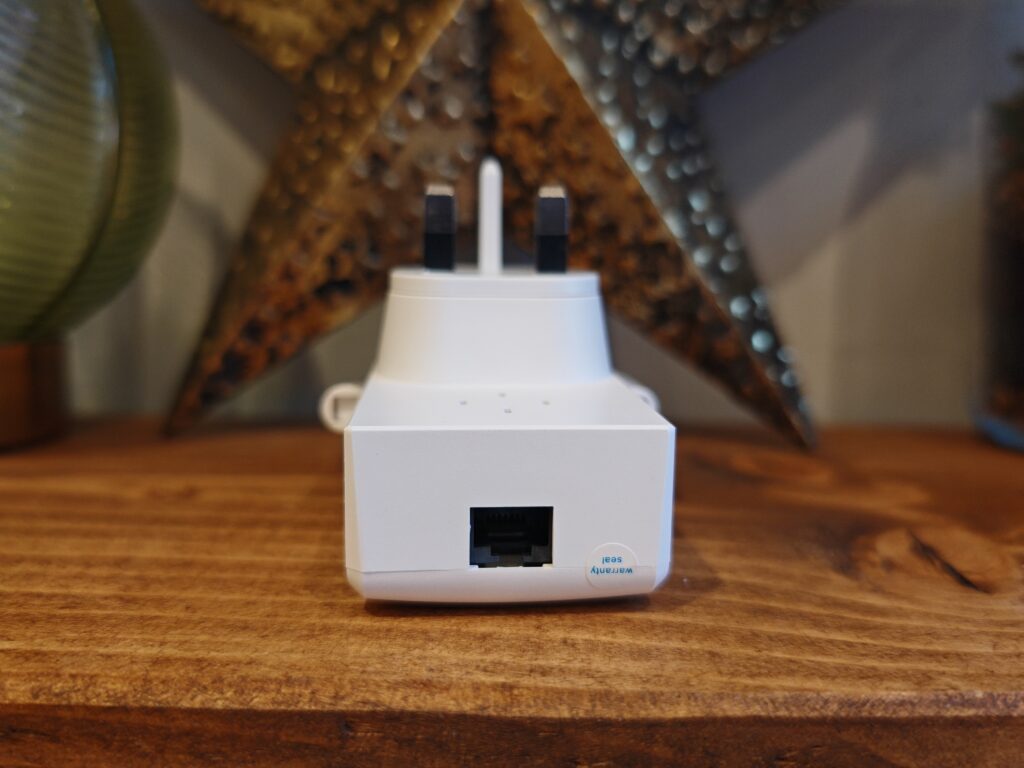
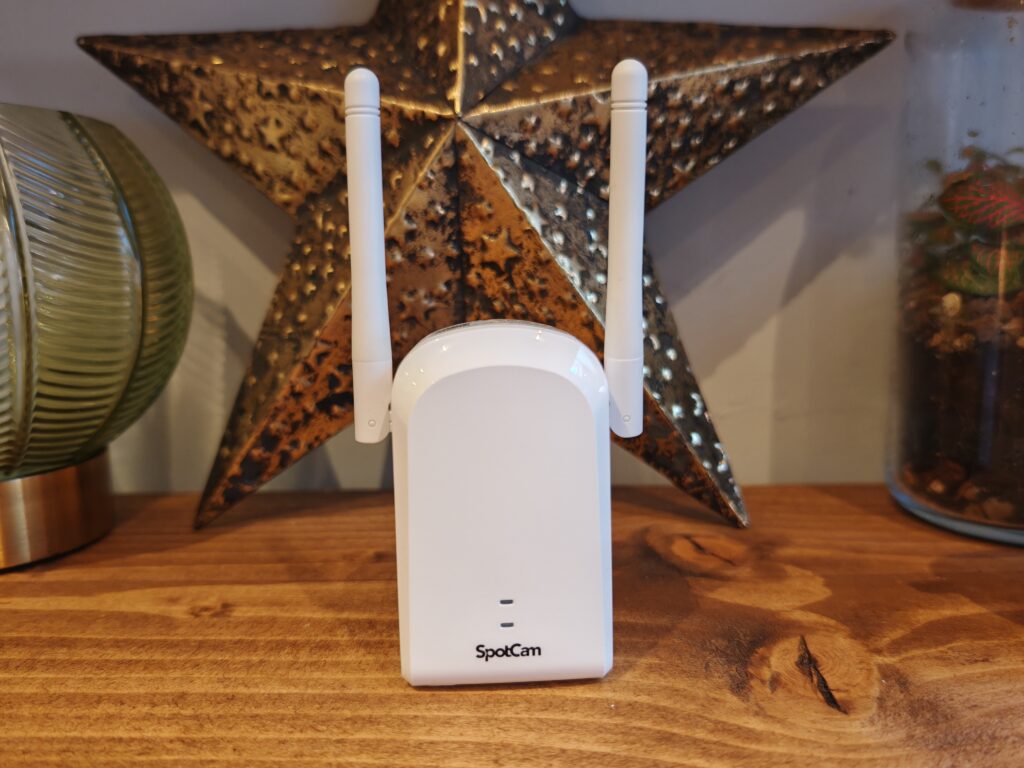
The SpotCam Solo Pro consists of the base station and cameras.
The base station is relatively unique as it connects to your home router via Ethernet. The Eufy HomeBase is also wired to Ethernet but many affordable brands stick with WiFi.
The base station then has two external antennas to maximise the wireless range to the cameras. The maximum line-of-sight range is 50 meters.
The cameras are compact and lightweight at just 218g. It has an all-white finish with black accents around the camera lens. The lens itself has a wide 160-degree field of view.
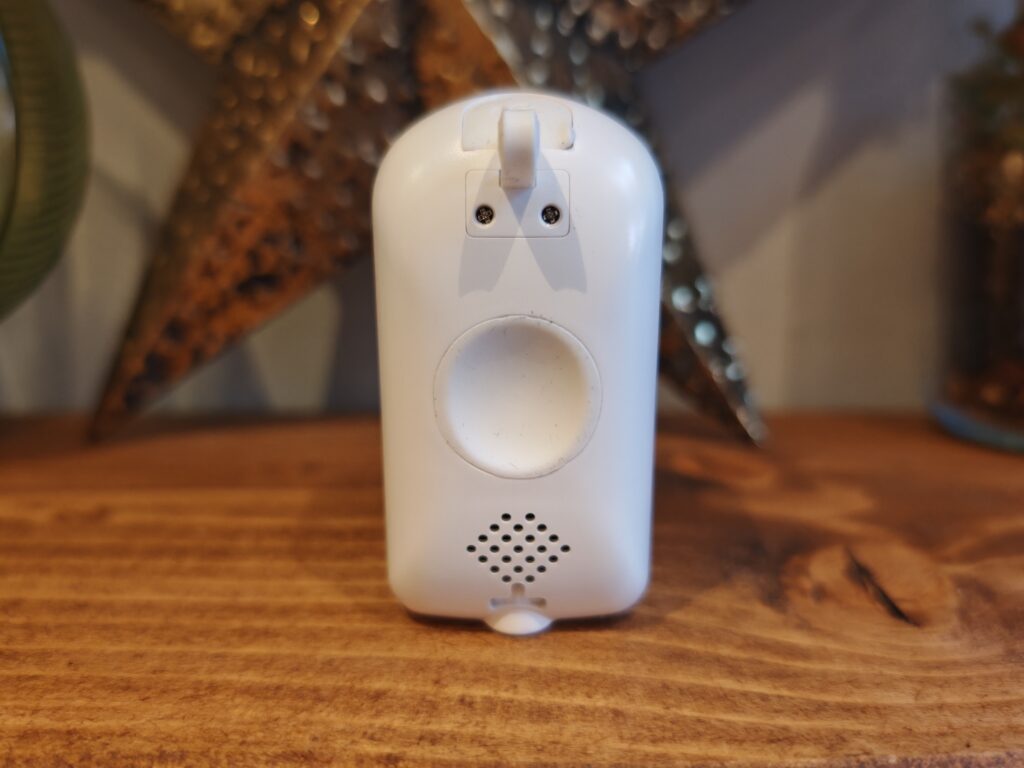
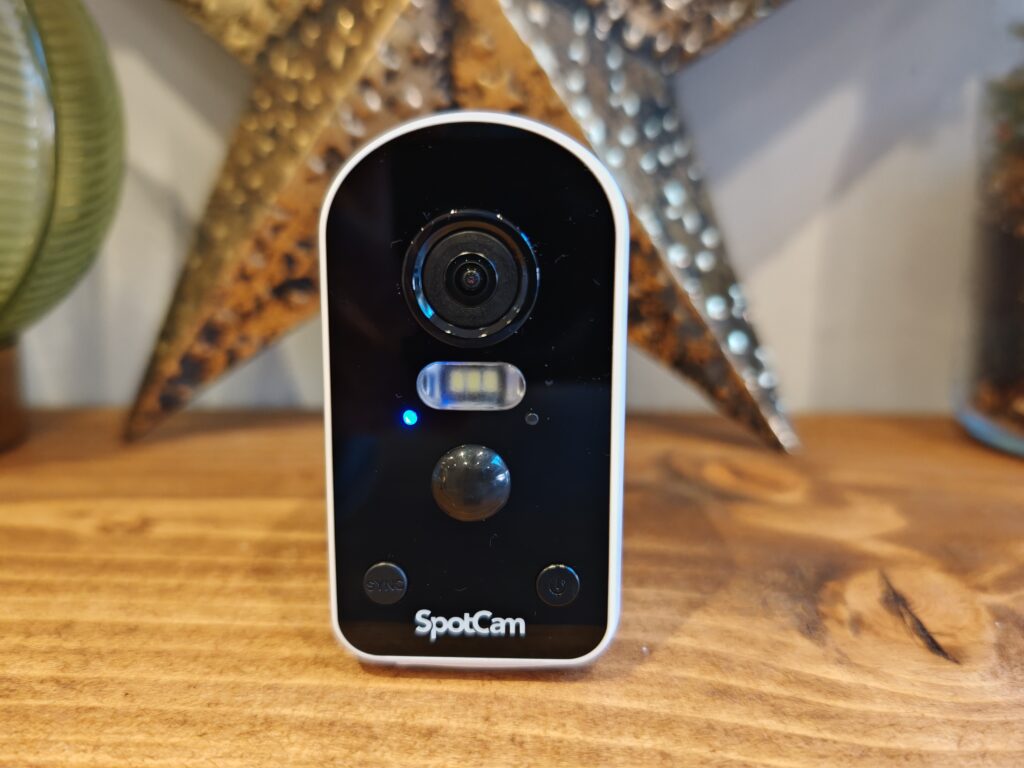
The camera has a omni-directional magnetic base. This allows the camera to be mounted on any metal surface at any angle. It can easily be repositioned as needed. The base has a standard tripod thread, which I find preferable hen using outdoors as I live in a coastal town in the north of England and anything not bolted down gets blown away.
An optional solar panel accessory is available, allowing theoretically indefinite operation without charging. The solar panel connects directly to the camera’s USB port.
Overall, the design is modern and flexible, allowing installation in more places compared to competitors.
Set Up
Getting set up takes around 10-15 minutes. First, you need to connect the base station to your router using the included Ethernet cable.
Next, power on the camera and connect to its WiFi access point from your phone. Launch the SpotCam app and follow the on-screen instructions to link the camera with the base station.
Once connected, you can name the camera, assign it to a location, and configure settings like motion detection and cloud storage. The app guides you through each step, making setup straightforward.
Similar to Eufy and other systems with a base station, the cameras connect to the base station directly using their own private wireless protocol. I assume this is just normal 2.4GHz WiFi but a hidden network. The benefit of this is that cameras connecting directly to a base station typically have a longer battery life than those that connect to your home WiFI.
Subscription Services
SpotCam has walled off a lot of advanced features with subscriptions. This is not uncommon for surveillance cameras.
Brands like Arlo can be used without a subscription, and if you have a base station, you can record without a subscription, but advanced features like person detection require an Arlo Secure subscription, which will set you back £4.49 pcm for a single camera at 2k or £10.99 for 4 cameras at 2K both with 30 days cloud recording or for £14.99 pcm you can have unlimited cameras, 4K recordings and 60 days of storage.
SpotCam is slightly different as they have a more confusing but modular approach to their services, which is broken down into cloud recording options and cloud AI services.
For all the subscriptions, it is a per-camera cost, which can get expensive quickly.
For cloud recording, you can apply for a free 7-day subscription, which I think is a fantastic offer.
But, if you want 30 days recording, that’s $3 pcm per camera or $5 per camera for 180 days recording.
Then for the cloud AI services, you have loads of impressive options but these all cost between $4 and $10 per month per camera.

There is an indoor service pack which gives you human and pet detection then missing object and virtual fence. This is $10 per camera, but it doesn’t work with these cameras.
The outdoor pack also can’t be applied, but it costs $10 and provides human/vehicle detection, followed by the same missing object and virtual fence.
One of the individual options is face recognition, which is actually quite a rare feature that I have only used on the Eufy Security S300, Netatmo, the Aqara doorbell and some of their camera hubs. I am impressed that they have this feature, but it costs $10 per month for a camera, which is just ridiculously expensive.
It is good that you don’t need a subscription to use the SpotCam, but unfortunately the subscription service is so expensive I can’t see why any one would buy it.
Recording Options
I have already covered recording options above, but to reiterate, there are two ways to store video from the SpotCam Solo Pro:
Cloud Storage: All cameras come with free rolling 7-day cloud storage. This means the latest 7 days of recordings are accessible in the cloud at no cost. You can optionally purchase 30-day or 1-year cloud plans for $3.99/month and $39.99/year respectively per camera.
Local Storage: For 24/7 continuous recording, a microSD card can be inserted to store footage locally on the camera. Cards up to 256GB are supported. There is no monthly fee for local storage, just the upfront cost of a memory card.
During my testing, both cloud and local recordings were reliable, with no gaps or corrupted footage. The advantage of local storage is that it avoids any cloud subscription fees. The advantage of cloud storage is remote access from anywhere. So you can choose the best option for your needs.
The local storage also supports a backup function in case of disconnection. If users are simultaneously using a memory card and a cloud storage plan, the footage will be synchronized in both locations. In the event of disconnection and subsequent reconnection, the footage will also be uploaded to the cloud, providing users with dual backup functionality for added peace of mind.
App Settings
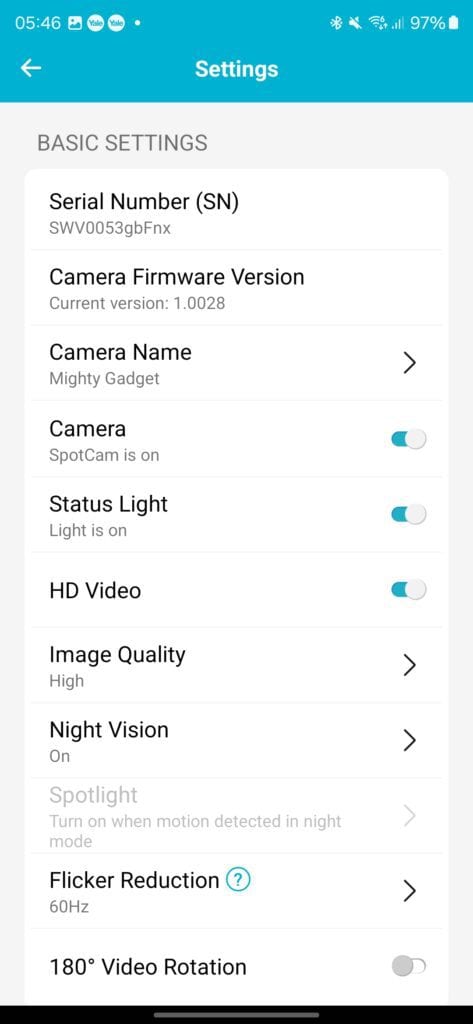
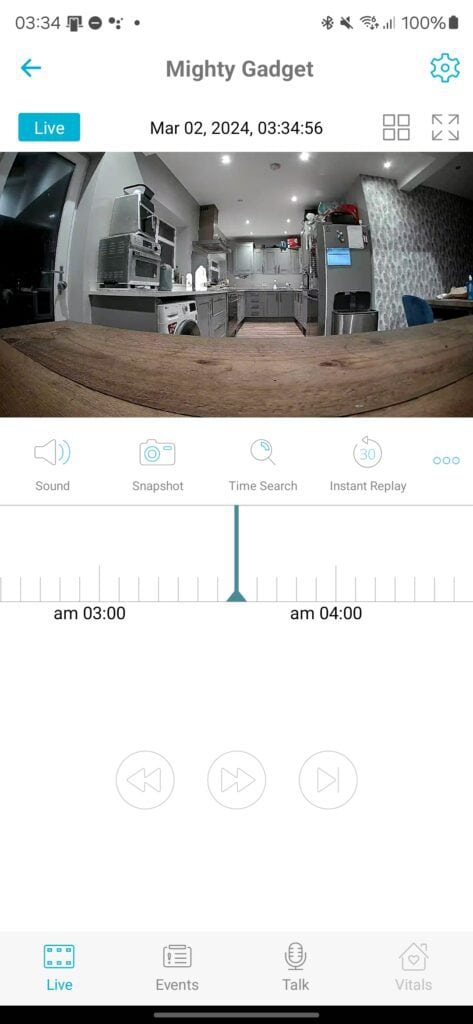
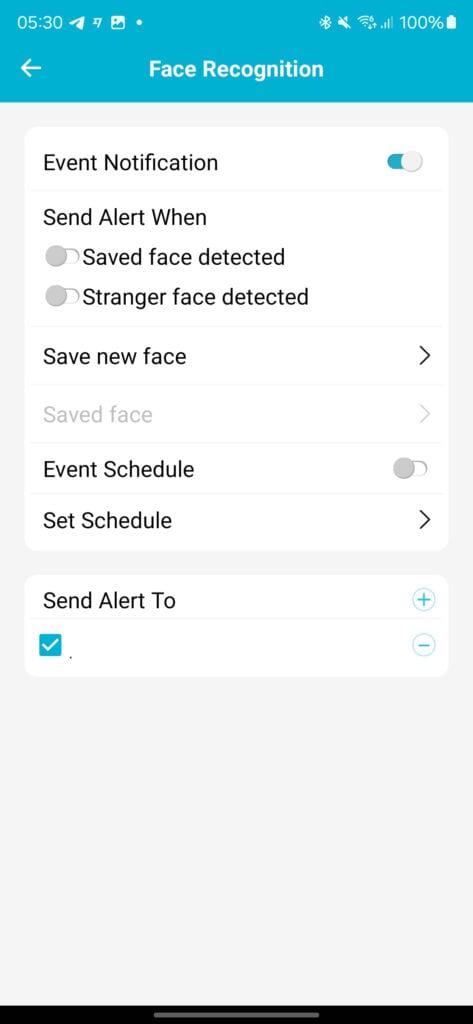
The SpotCam app (available for iOS and Android) provides full control over the camera. The dashboard shows all connected cameras, battery level, signal strength, and cloud storage usage.
From the camera feed screen, you can take a snapshot, enable audio and use the microphone. There is no way to remotely enable the spotlight.
Within the settings, you can adjust the image quality, define how night vision works and enable HD video. By default, the night vision is set to basic B&W with the spotlight not turning on. This will preserve the battery, but I’d recommend setting it to come on when motion is detected.
The Settings menu also includes options for alerts, notifications and schedules, but there is no motion detection sensitivity or activity zones as I assume these are within the subscription service.
Finally, under the general app settings and smart connection, you have options for Google Assistant, Amazon Alexa and IFTTT, which can be used for automation based on motion events. You can, for example, flash a smart bulb whenever the camera detects motion at night.
Motion Detection
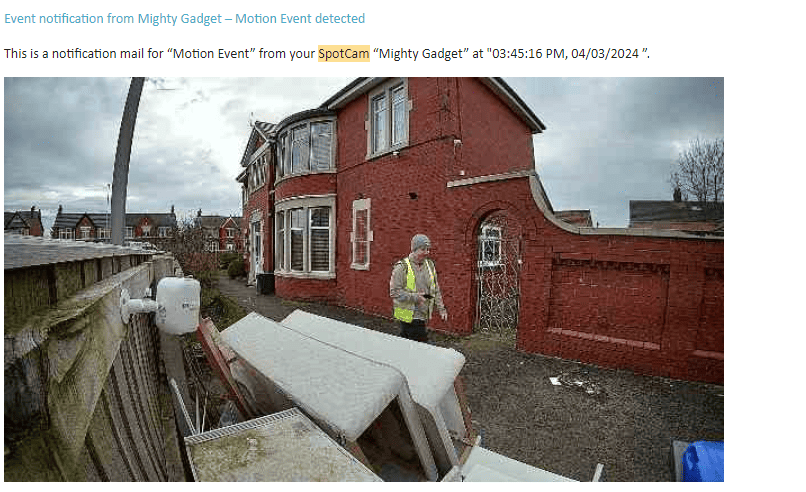
Without a subscription, you only get basic motion detection. It worked well, and it was accurate and quick to respond to. You can get notifications to your mobile and email with the email containing an image of the event.
Basic motion detection works well indoors but for outdoor sue, you really need the AI object detection to minimise false positives.
Within the settings, you can define the recording duration. The default is 10 seconds but there are options for 20 and 30 seconds.
Day Time Footage
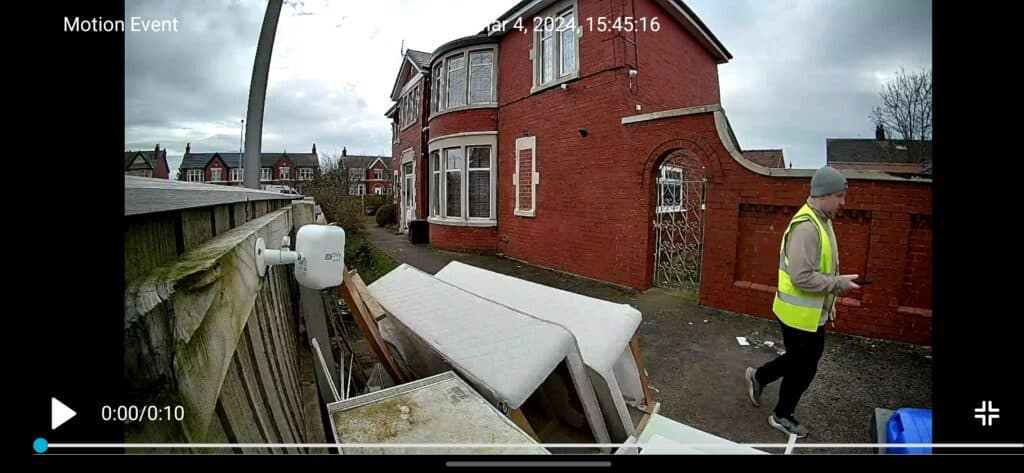
As previously mentioned, you can set the image quality in the settings with the default being normal. Switching to high quality significantly improves the image quality.
Thanks to the 2.5K resolution sensor, daytime video quality is excellent. Footage is crisp and clear with accurate colors and plenty of fine detail. The wide field of view captures entire driveways or backyards nicely.
I compared the SpotCam Pro side-by-side with other cameras like the Eufy Security S300 and Reolink Argus 2E and was happy with the performance.
The frame rate is steady at 15 fps, which is sufficient for security footage. There is minimal lag or choppiness. Streaming also works well, allowing smooth live viewing through the mobile app.
So, for daytime video, the 2.5K resolution makes a tangible difference and provides lots of zoom flexibility.
Night Time Footage
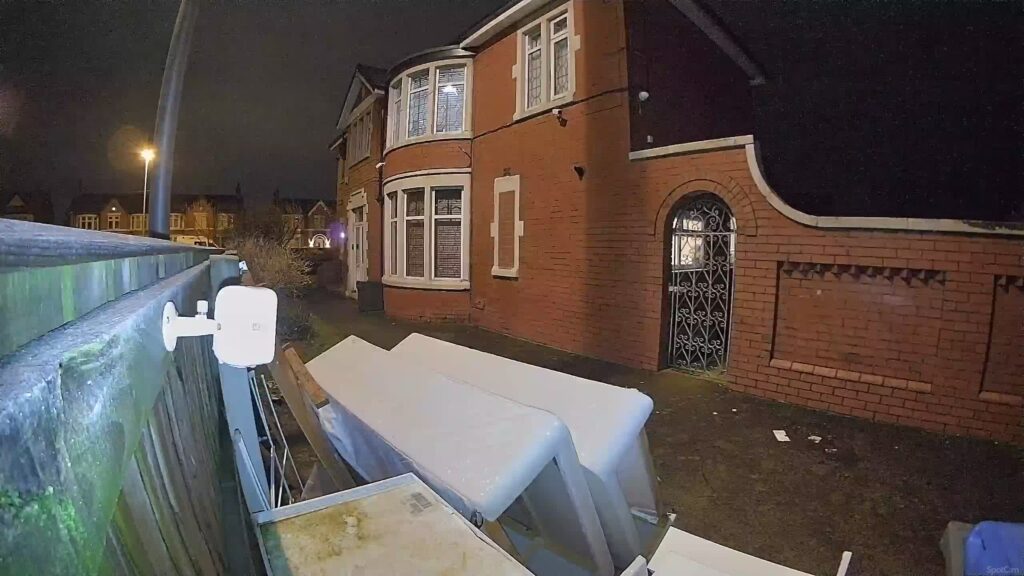
At night, the camera has two illumination options:
- Infrared: The IR LEDs enable monochrome night vision in complete darkness. The range is specified at 30 feet, which I found to be accurate. IR footage is clear for most security applications and has decent contrast and brightness.
- Colour Night Vision: The Solo Pro is a built-in spotlight consisting of 3 LEDs with adjustable brightness. When enabled, this casts white light on the scene, allowing the camera to capture colour footage at night. The brightness is enough to illuminate subjects around 20 feet away. The major advantage over IR is colour details make footage much easier to interpret.
I found that switching to the high-quality image made the most difference with nighttime footage, especially with the spotlight on.
With image quality set to high and the spotlight on, the colour night footage is excellent. It’s not the best as the Eufy is better but also more expensive. I’d say this is the best colour night footage of an affordable wireless camera.
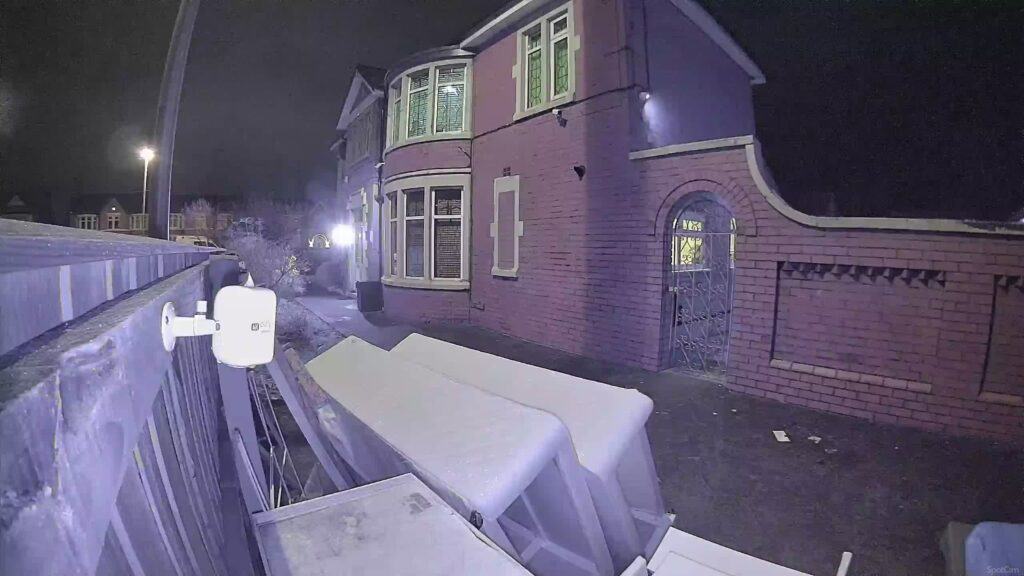
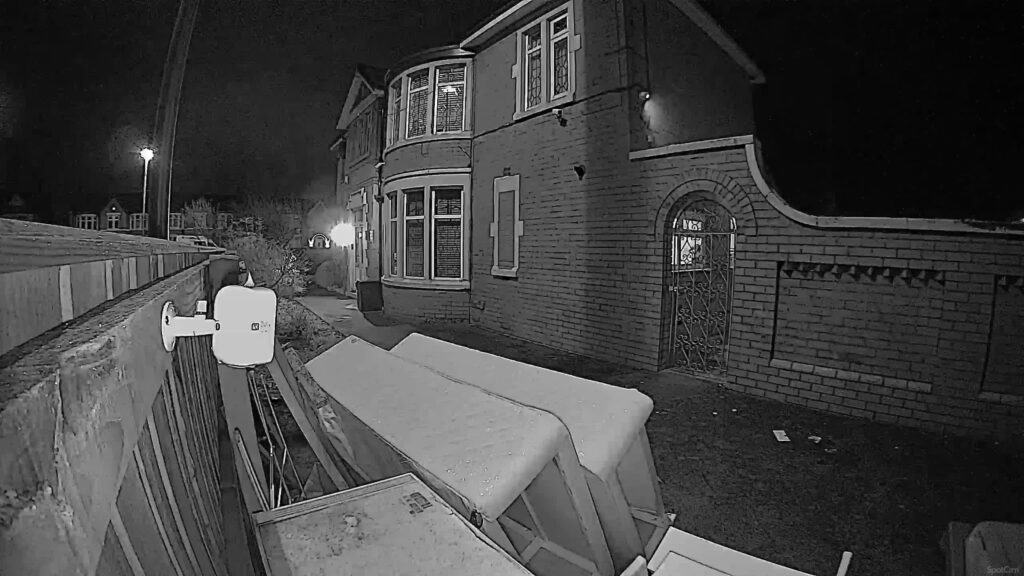
Price and Alternative Options
Pricing is:
- SpotCam Solo Pro Spotlight Camera – 2 Pack with Base Station $235
- SpotCam Solo Pro Spotlight Camera – 4 Pack with Base Station $377
It is available to buy from Amazon US but is not currently available on Amazon UK.
The eufyCam S300, which I have referenced in this review, is £320 for a 2-pack.
Reolink has several Argus cameras, including:
- Argus 3 Ultra with 4K, a spotlight for colour night vision and 2.4/5GHz WiFi connectivity. This costs £125 per camera.
- Argus Eco Pro with 5MP 2K Super HD, a spotlight for colour night vision and 2.4/5GHz WiFi connectivity for £107 per camera.
Overall
I think the SpotCam Solo Pro is a good wireless camera system with an attractive up front fee, excellent video quality and flexible storage options which includes 7-days free cloud recording and subscription free local recording to microSD.
I am impressed that they have a significant number of AI features which includes facial recognition and fall detection. These are features you won’t find on many competing products. Unfortunately, this is let down by the high subscription fees. I’d pay $/£10-15 per month for all the features for all the cameras, but not up to $10 per month per feature per camera.
Overall though, if you don’t need the AI features, I think the SpotCam Solo Pro is well worth considering.
SpotCam Solo Pro Review
Summary
I think the SpotCam Solo Pro is a good wireless camera system with an attractive up front fee, excellent video quality and flexible storage options which includes 7-days free cloud recording and subscription free local recording to microSD. It is let down by the excessively expensive AI subscription fees. If these were more reasonable it would have been an superb camera.
Pros
- Affordable up front cost
- 7 days free cloud storage plus microSD
- Good quality footage for an affordable camera.
Cons
- AI features have a very high subscription fee
I am James, a UK-based tech enthusiast and the Editor and Owner of Mighty Gadget, which I’ve proudly run since 2007. Passionate about all things technology, my expertise spans from computers and networking to mobile, wearables, and smart home devices.
As a fitness fanatic who loves running and cycling, I also have a keen interest in fitness-related technology, and I take every opportunity to cover this niche on my blog. My diverse interests allow me to bring a unique perspective to tech blogging, merging lifestyle, fitness, and the latest tech trends.
In my academic pursuits, I earned a BSc in Information Systems Design from UCLAN, before advancing my learning with a Master’s Degree in Computing. This advanced study also included Cisco CCNA accreditation, further demonstrating my commitment to understanding and staying ahead of the technology curve.
I’m proud to share that Vuelio has consistently ranked Mighty Gadget as one of the top technology blogs in the UK. With my dedication to technology and drive to share my insights, I aim to continue providing my readers with engaging and informative content.

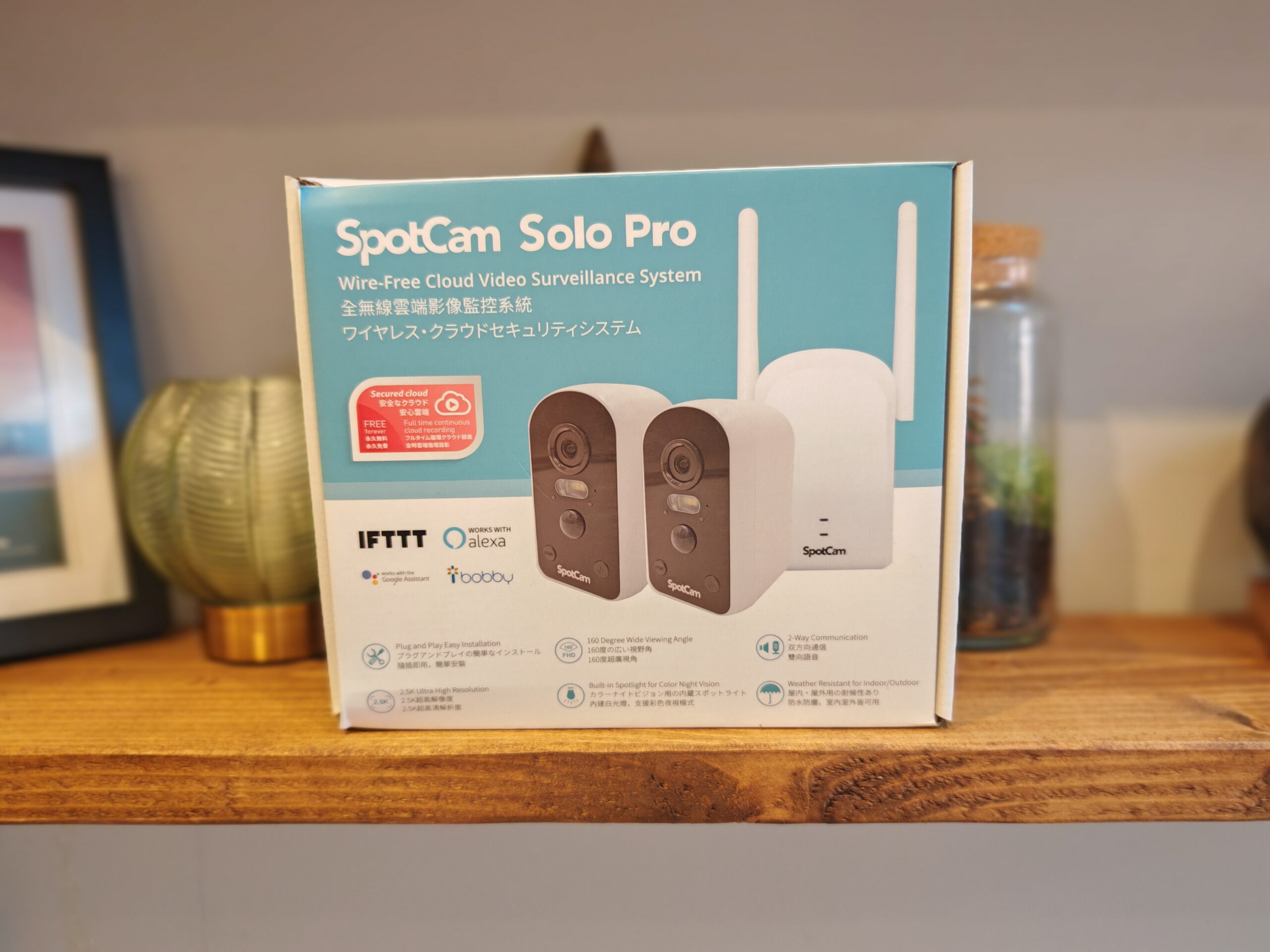



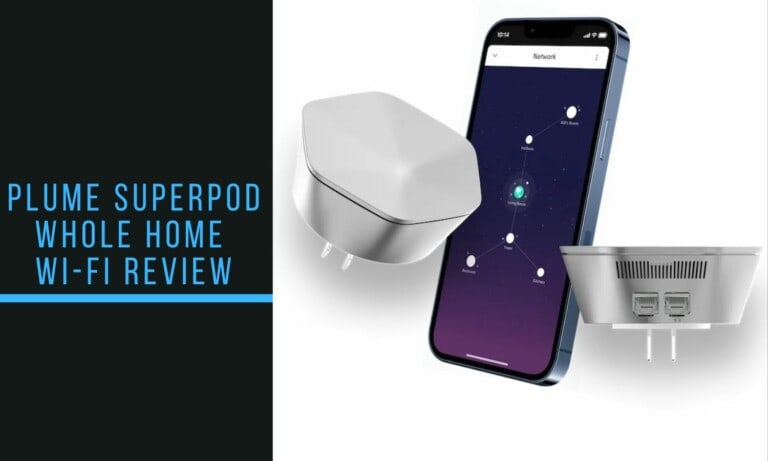
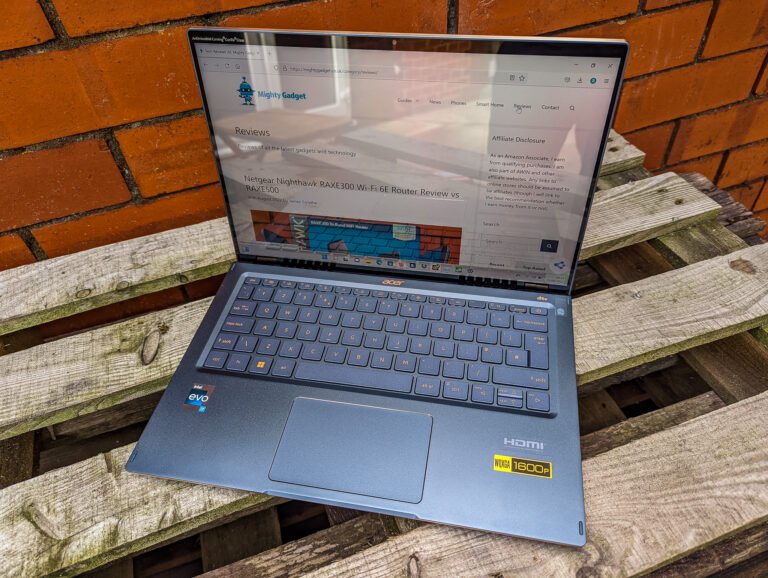
![Vodafone 5G Mobile Hotspot Review [ZTE MU5001] – A bargain deal to watch out for](https://mightygadget.com/wp-content/uploads/2022/03/Vodafone-5G-Mobile-Hotspot-Review-768x314.jpg)